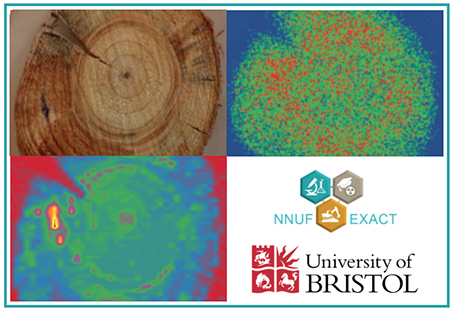Evaluating the radionuclide composition, distribution and speciation within Chernobyl Red Forest environmental material to better underpin mobility and fire release dynamics

A selection of biota samples from the Red Forest in the Chernobyl Exclusion Zone was sent to the EXACT facility including cross-sections of tree branches, and whole acorns. These were subsampled and sent for analysis at subcontracted laboratories including at two of our supporting facilities: GAU-Radioanalytical and the University of Southampton’s Geochemistry Research Group.
Autoradiography (British Geological Survey) was used to map the distribution of activity within the samples and inform further subsampling to quantify the partitioning of nuclides (Cs-137 and Sr-90) between different anatomical regions. Activity was also correlated to elemental composition using micro-XRF and LA-ICPMS mapping.
The release of Cs-137 under forest fire conditions was investigated by exposing the biota samples to controlled temperatures under a nitrogen atmosphere using a Raddec Pyrolyser furnace. These experiments showed that Cs-137 is not released as a volatile gas under these conditions.
How did EXACT support this project?
- Enabled fully remote user access via regular updates of analytical progress and collaboration on experimental planning
- Coordinated further analysis by external laboratories through robust activity screening and sample custody/transport procedures
- Provided staff expertise in radioanalytical research and development to support the development of the experimental plan for simulating forest fire conditions
(Case Study - Peter Martin, University of Bristol)